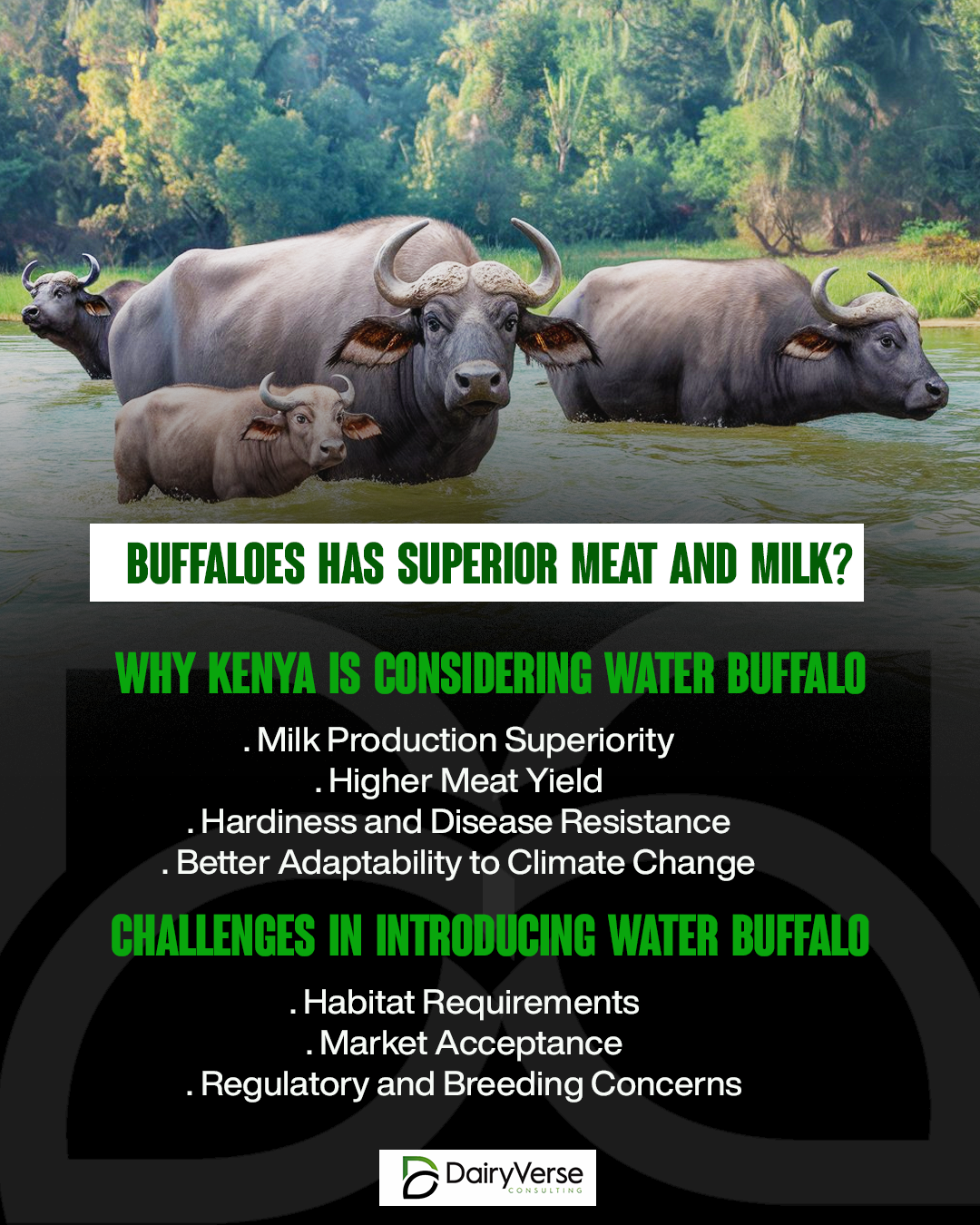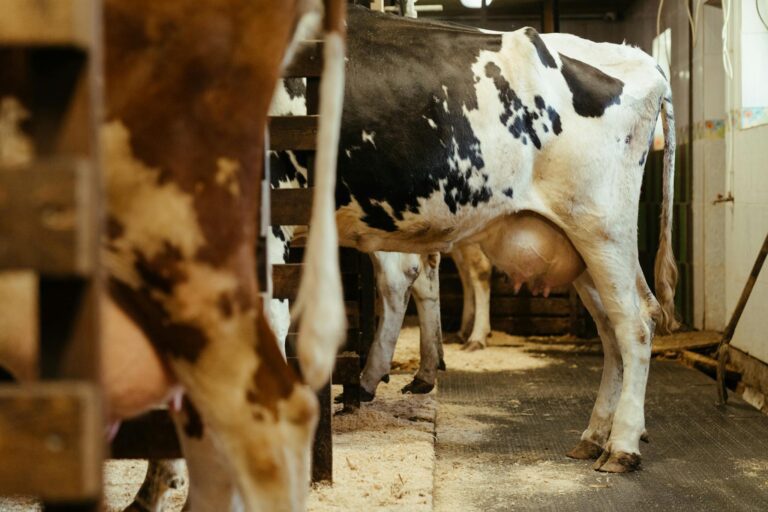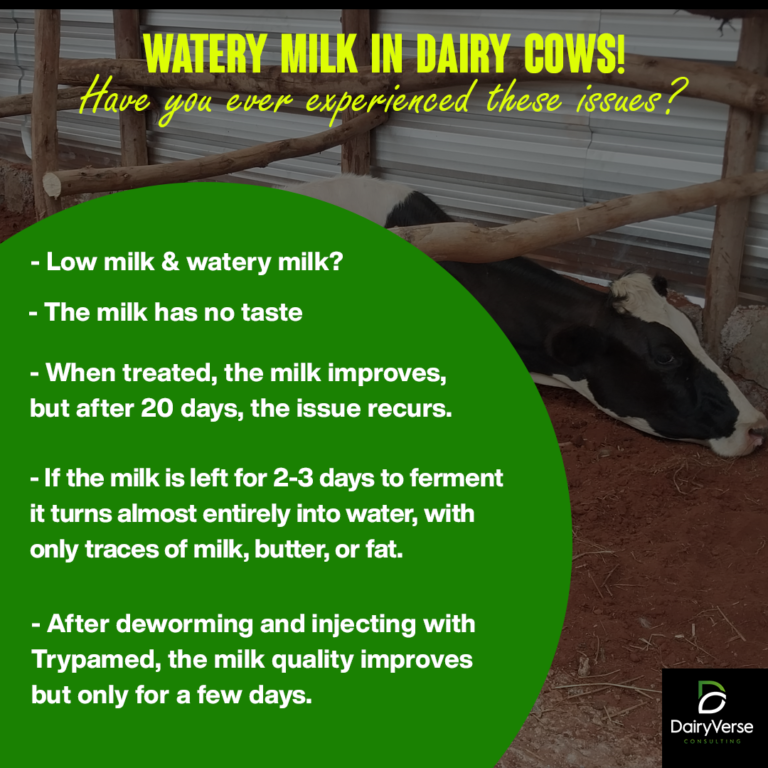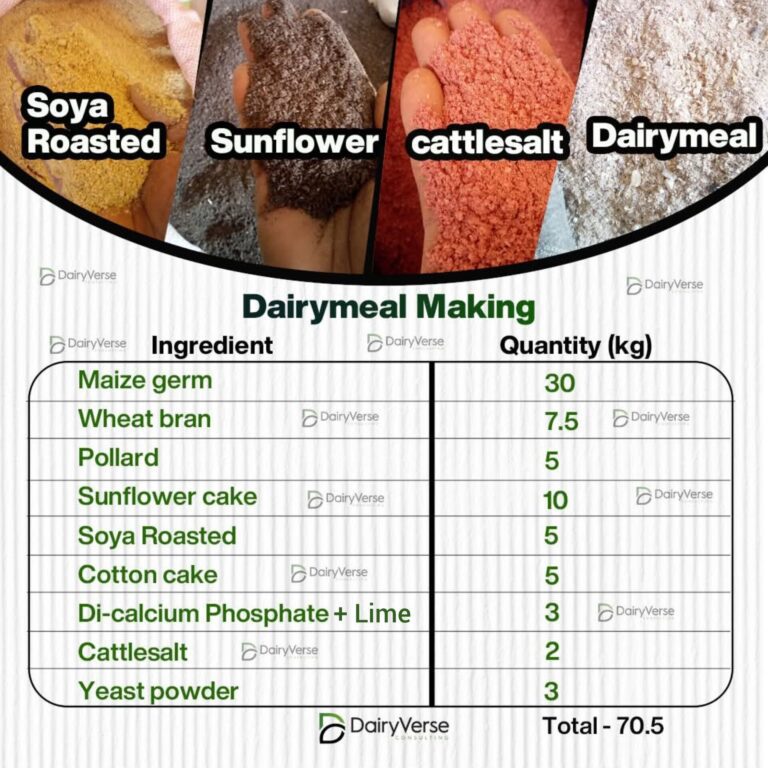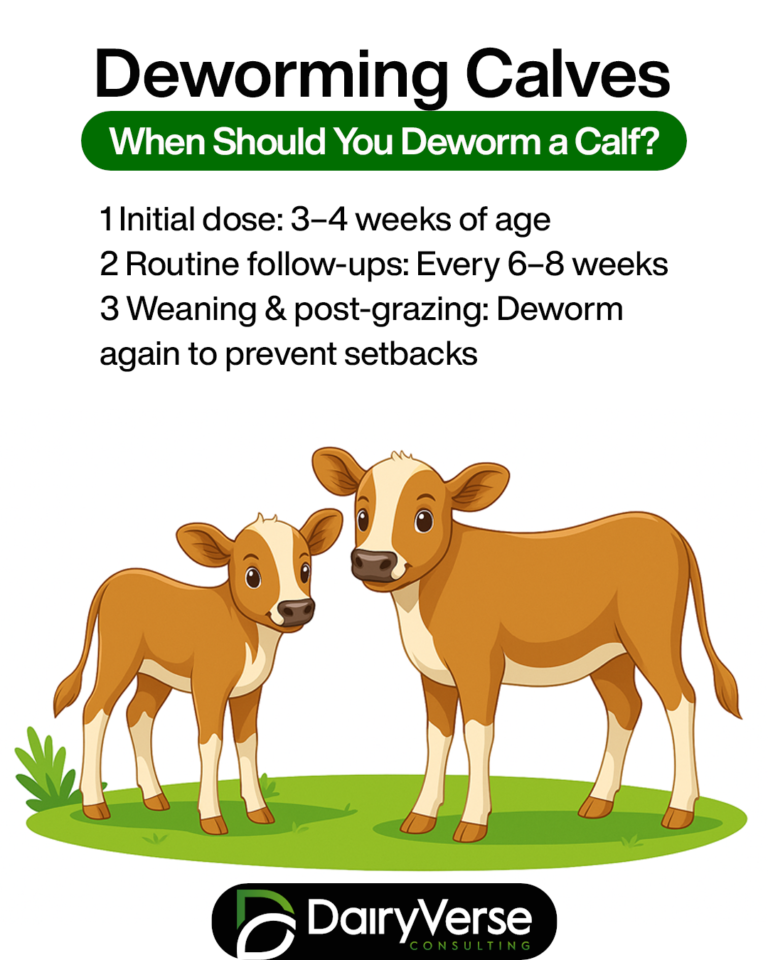Understanding South Asian Water Buffaloes
Introduction
Kenya’s agricultural and livestock sectors are on the verge of a transformative shift with the potential introduction of South Asian water buffalo. Known for their superior meat and milk production, these buffalo species have been a cornerstone of the dairy and meat industries in countries like India, Pakistan, and Bangladesh. The question remains: Can they thrive in Kenya, and will they offer the expected economic and nutritional benefits?
Understanding South Asian Water Buffaloes
South Asian water buffaloes (Bubalus bubalis) are distinct from African buffaloes (Syncerus caffer). Unlike their African counterparts, which are mostly wild and untamed, South Asian water buffaloes have been domesticated for centuries, playing a significant role in dairy farming and meat production. These animals thrive in wetland areas, often submerging themselves in water to regulate body temperature and prevent heat stress.
The two major types of domesticated water buffalo are:
- River Buffaloes – Primarily used for dairy production, yielding high-fat-content milk.
- Swamp Buffaloes – More suited for labor and meat production, found predominantly in Southeast Asia and China.
The Appeal: Why Kenya is Considering Water Buffalo
1. Milk Production Superiority
Water buffalo milk is rich in butterfat (7-8%) compared to cow’s milk (3-4%), making it ideal for producing dairy products like cheese, yogurt, and ghee. This higher fat content results in creamier, nutrient-dense dairy products. With Kenya’s rising demand for milk and dairy derivatives, these buffaloes could provide an alternative to traditional cattle dairy farming.
2. Higher Meat Yield
Water buffalo meat is leaner than beef, with lower cholesterol and higher protein content. It is widely consumed in many Asian countries and could become a viable alternative to beef in Kenya, providing a more affordable yet nutritious protein source.
3. Hardiness and Disease Resistance
One of the key challenges facing cattle farming in Kenya is the prevalence of diseases like East Coast Fever and Foot-and-Mouth Disease. Water buffaloes have a higher resistance to these diseases, making them more sustainable for farmers who struggle with veterinary costs.
4. Better Adaptability to Climate Change
Given the unpredictability of climate conditions, water buffaloes’ ability to thrive in wetland ecosystems could be beneficial in Kenya. They are more resistant to droughts compared to traditional cattle and can utilize marshy lands unsuitable for other livestock.
Challenges in Introducing Water Buffalo to Kenya
1. Habitat Requirements
Water buffaloes thrive in environments with access to water bodies like rivers, dams, or swamps. Given Kenya’s semi-arid landscape in many regions, only select areas might be suitable for large-scale water buffalo farming.
2. Market Acceptance
Kenyan consumers are accustomed to cow’s milk and beef. While water buffalo milk is superior in nutrition, it has a distinct taste and composition that may require consumer education and marketing efforts.
3. Regulatory and Breeding Concerns
The introduction of non-native species requires strict biosecurity measures to prevent the spread of foreign diseases. Additionally, breeding programs would need to be established to ensure genetic diversity and adaptability to Kenya’s environment.
Global Success Stories
Countries like India and Pakistan have successfully integrated water buffalo into their agricultural systems, contributing to the world’s largest production of buffalo milk. Similarly, the Philippines has developed a hybrid buffalo breed known as the ‘Murrah Buffalo,’ which significantly boosts dairy output. If well implemented, Kenya could replicate such success in its livestock sector.
Conclusion
The introduction of South Asian water buffalo to Kenya presents promising opportunities for dairy and meat industries. Their superior milk and meat production, resilience to disease, and adaptability to climate change make them a compelling choice for livestock farming. However, success will depend on suitable rearing conditions, consumer acceptance, and regulatory compliance.
Would you be open to trying buffalo milk or meat as part of your diet? Share your thoughts!

